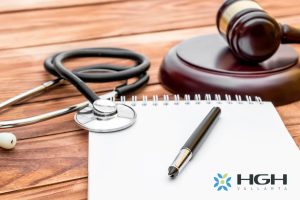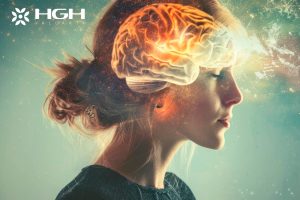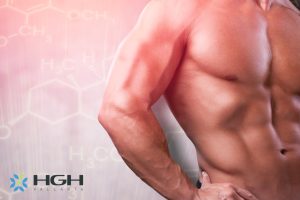Testosterone is the main androgen in men, for men diagnosed with hypogonadism, testosterone replacement therapy is helpful to maintain an individual’s quality of life.
Testosterone replacement therapy (TRT) is often used to treat testosterone deficiency, however, any form of abuse will cause adverse testosterone side effects. It is important to know that testosterone replacement therapy must be taken under a supervision of a hormone specialists to avoid and minimize testosterone side effects.

What are the Potential adverse effects of testosterone replacement therapy?
Testosterone, the penis and erection
Androgens are essential for normal penis growth, however, when testosterone is administered to healthy individuals it is not capable of increasing its size. Several studies have recorded prolonged erections and priapism, at the beginning of Testosterone replacement therapy.
If this occurs tell your hormone specialist right away, since the aspiration of blood in the corpora cavernosa may be necessary.
Testosterone and the testes
Testosterone plays an important role in men especially in the initiation and maintenance of spermatogenesis or the origin and development of sperm cells.
High doses of testosterone suppresses the secretion of gonadotropin from the pituitary gland through negative feedback mechanism (it is a monitoring mechanism in which a “stimulus” causes an conflicting “output”, in demand to preserve order or homeostasis), when this occur this would lead to significant decrease in sperm concentration (World Health Organization, 1990, 1995), though it will not change the ejaculate volume.
Moreover, the size of the testis will gradually decrease approximately 30%. The good news is, this effect is completely reversible.
Testosterone and the mammary glands
Testosterone can induce gynaecomastia (often referred to as ‘man boobs). Though only a few cases of testosterone-induced gynaecomastia are recorded, this is usually observed when testosterone injection is abused.
One study by Wu et. al, have recorded nine volunteers developed gynecomastia during high-dose testosterone enanthate treatment. Though gynaecomastia is reversible and can be treated.
On the other hand breast cancer is a rare case in men, an extended literature searched have found no records of breast cancer associated with TRT, though breast cancer cells are sensitive to hormone especially oestrogen sensitive, and therefore for safety purposes breast cancer is considered a contraindication to testosterone treatment (Nieschlag and Behre, 1998).
Sleep apnea
One study by Barrett-Connor et al shows that low Testosterone levels are associated with less healthy sleep in older men, this was explained by the degree of central adiposity. Also, testosterone has claimed to increase sleep apnea (Matsumoto et al, 1985).
Men who suffer from obstructive sleep apnea have shown to have elevated erythrocyte counts and haematocrit, though short-term androgen deprivation doesn’t show any improvement of the symptoms of sleep apnoea (Stewart et al, 1992). The increase of haematocrit and increased mass of pharyngeal muscle bulk, as well as the neuroendocrine effects of testosterone during testosterone replacement therapy, may be the possible reasons.
However, some studies are in contrast with this, one of which is a study by Hajjar, in which there is a better quality of sleep on most hypogonadal patients during TRT.
Effects Of testosterone on skin and hair growth
Androgenic alopecia (hair loss in men and women) is androgen dependent (Randall, 1998). Higher levels of free testosterone are recorded in men with frontal or vertex baldness when compared to men with no or little hair loss (Demark-Wahneffied et al, 1997). TRT is often associated with extreme oiliness of the skin or in some case a development of acne.
Though according to the world health organization, minimal and regulated dosage of testosterone will minimize these symptoms.
Testosterone treatment in women
Several effects of TRT in women must be given consideration, androgen treatment on females can lead to hirsutism, acne, coarsening of the voice, hypertrophy of the clitoris and male-pattern baldness (Griffin and Wilson, 1992).
Other testosterone side effects may be irreversible such as coarsening of the voice and androgenic alopecia. In pregnant women, testosterone has no indication, according to an animal study conducted by Frits, testosterone treatment has an adverse effect on fetus especially in terms of virilization of female fetuses.
Possible Testosterone Side Effects and Effects on Offspring
Adverse Effects of testosterone therapy on men to their offspring have not been reported, though testosterone and other androgen have been used to cure infertility on men-of which despite the ineffectiveness of the treatment have caused several men to become a father (Ketchel, 1977).
In animal studies of male rats, there was no effect on the incidence of pre- or post-implantation loss, malformation or the number of pups per litter (Robaire et al, 1984). Moreover, testosterone doesn’t cause transformation in cells and mutagenic properties as shown in several in vitro assays (Schiffmann et al, 1985).

Basing upon from the in vitro studies, animal studies as well as clinical studies, testosterone can be considered as having no adverse effects on the offspring of treated men.
Haemopoietic effects
Testosterone can stimulate haemopoiesis (production of blood cells and platelets) through the direct activation of hemopoietic stem cells and via erythropoietin synthesis. This stimulatory effect of androgens on erythropoiesis has been used for several years in the treating a variety of anaemias (Shahidi, 1973).
Though high doses of testosterone may result in polycythaemia (Matsumoto et al, 1985; Hajjar et al, 1997; Sih et al, 1997). Thus haematocrit and erythrocyte count must be monitored during testosterone treatment.
Muscularity and bones
Testosterone has direct anabolic effects on striated and smooth muscles, with an increase in fibres hypertrophy and increase in muscular mass. In 1997 a study conducted by Behre et. al, founds out that long-term testosterone substitution can maintain bone density on the normal range. Consequently, testosterone replacement therapy increases the muscle mass of par spinal in hypogonadal men.
Testosterone and the prostate
Androgen has control in the growth and differentiation of the prostate. According to world health organization, more than 80% of men who are older than 70 years old have symptoms of benign prostatic hyperplasia, in which androgens play an important role in its development.
However, among those patients with BPH, there is no consistent elevation of serum testosterone compared with age-matched unaffected men. The effect of testosterone therapy on the prostate health of men have drawn debate among researcher since some believe that low doses of testosterone are effective for men who are treated for prostate cancer.
Because of the possible danger stimulating an existing prostate cancer, every patient of Testosterone replacement therapy must be examined regularly during the course of the treatment.











